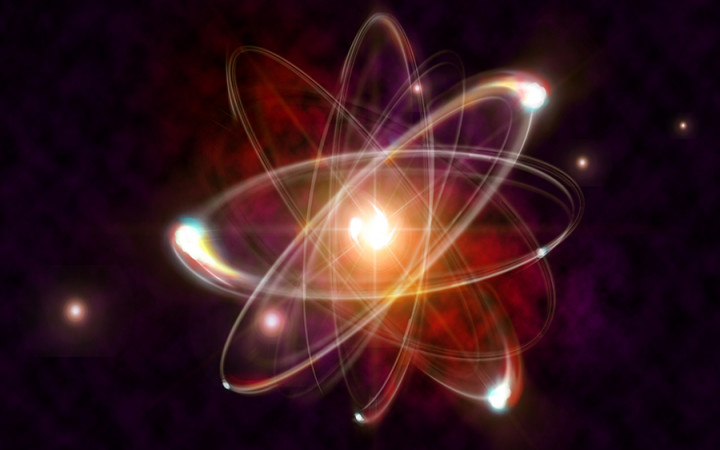Today’s Wonder of the Day was inspired by Bowie. Bowie Wonders, “what is quantum physics ” Thanks for WONDERing with us, Bowie!
Do you ever look at the world around you and WONDER what it's made of? Something complex like an automobile can be made of thousands of different materials. Even a seemingly simple thing like a handful of sand can be made up of all sorts of microscopic bits of "stuff."
All the "stuff" that makes up us and all the things around us is known as matter. But does it really matter what all that matter is made of? To scientists, it certainly does!
Since the earliest days of scientific inquiry, scientists have been fascinated with learning more about the basic building blocks of matter. At one time, scientists thought that they had solved the mystery when atoms were theorized and finally discovered. Surely there couldn't be anything smaller than the atom, right?
It didn't take scientists long to begin theorizing about what might exist inside atoms. Over the past century, scientists have come up with fascinating theories about how the things that make up atoms work. This field of study is known as quantum physics (sometimes also known as quantum mechanics), and it often sounds more like science fiction than regular science.
As you can imagine, studying matter at the subatomic level is not easy. It requires a great deal of experimentation, careful observation with precise instruments, and advanced mathematical equations.
The theories that quantum physicists have developed over the years can be difficult to understand for even the most brilliant scientists. For this reason, we'll take a look at just a few of the most basic aspects of quantum physics.
Quantum physics got its start with German physicist Max Planck. In 1900, he presented his quantum theory, which assumed for the first time that energy existed as individual units, similar to matter, rather than as a constant electromagnetic wave.
Planck called these individual units quanta, which gave his theory and this new field its name. According to Planck, a quantum is the smallest possible amount of energy. A quantum of light, for example, is known as a photon.
Planck won the Nobel Prize in Physics in 1918 for his theory. Other prominent scientists, including Albert Einstein, Niels Bohr, and Werner Heisenberg, added to Planck's work to develop quantum physics in the following decades.
Several interesting theories have developed in quantum physics, and some of them boggle the mind. For example, Louis de Broglie proposed the principle of wave-particle duality in 1924. According to his theory, no fundamental difference exists in the behavior and makeup of matter and energy. At the atomic and subatomic level, both matter and energy can behave as if they are made of either particles or waves.
In 1927, Werner Heisenberg developed a theory that has become known as the uncertainty principle. According to Heisenberg, it's impossible to measure precisely both the position and momentum of a subatomic particle, because the process of observation itself affects subatomic particles.
Simply put, the more you know about where a particle is, the less you can know about how it is moving, and vice versa. The consequence of this theory is that quantum physicists can only measure probabilities, not certainties.
Building upon Heisenberg's work, Niels Bohr proposed a theory known as the Copenhagen interpretation of quantum theory. According to Bohr's theory, a particle is whatever it is measured to be (either a wave or a particle). However, until it is measured, it exists in all possible states simultaneously. This principle has also become known as superposition.





